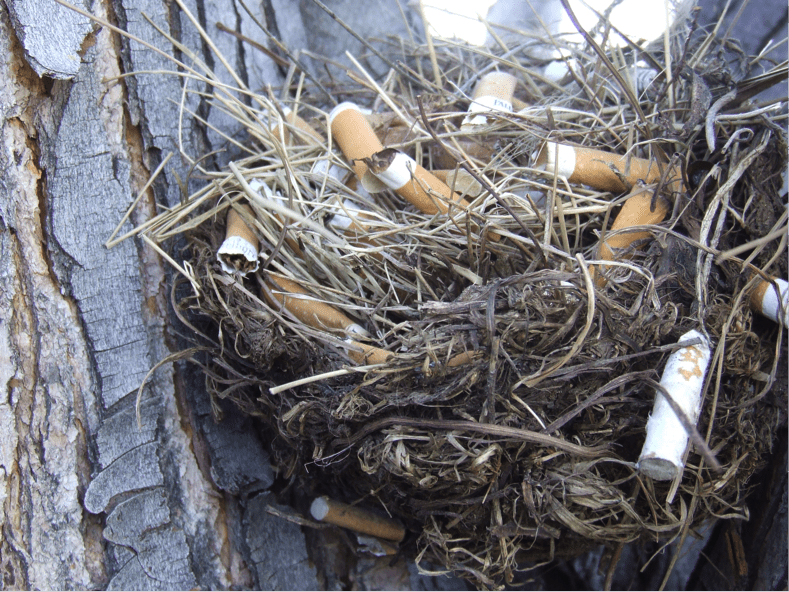Out of all the reasons you should quit smoking, maybe an unusual avian behavior will convince you. According to researchers at the National Autonomous University of Mexico, house finches collect discarded cigarette butts and use them as nest building material to ward off pests like ticks. Essentially, the birds employ a form of chemical warfare against the parasites — and some people are willingly pumping it in their lungs.

This kind of behavior has been noted for some time but despite nicotine’s antiparasitic properties, it was never clear if this was done on purpose to protect the bird’s nest or merely a coincidence. To get to the bottom of things, a team led by Constantino Macías Garcia set up an experiment involving 32 house finches (Carpodacus mexicanus) which were separated into three groups exactly one day after the eggs in their nests had hatched.
First of all, the natural nest lining was removed and replaced with artificial felt so that any parasites that might have moved in during brooding could be eliminated. The researchers introduced live ticks in the first group comprised of ten nests, dead ticks in another ten nests while the final third group made of 12 nests was left free of any parasites.
When the nest contained ticks, the finches were far more likely to add cigarette butt fiber to their nest. The weight of cigarette butt material added to these tick-infested nests was also 40 percent greater on average than the weight of cigarette butt material added to the nests were dead ticks were present.
This evidence suggests that the finches really are consciously using the cigarette butts to cleanse their nests and protect them from ticks.
“It seems that the tendency to bring to the nest cigarette butts is at least partially a response to current, and perhaps also past, parasite load,” the researchers wrote.
A positive use for cigarettes? Not necessarily.
But this sort of chemical warfare is like a double-edged sword, as we have learned from many human conflicts as well. In 2012, Garcia and colleagues reported that the more butts are present in Mexican house finch nests, the greater the number of chromosomal abnormalities in the chicks. Maybe the birds are aware of this but the trade off is acceptable to them. It’s more likely however that finches are not aware of the damage they’re causing to their own chicks since the genetic damage is far more difficult to spot.
Findings appeared in the Journal of Avian Biology.






